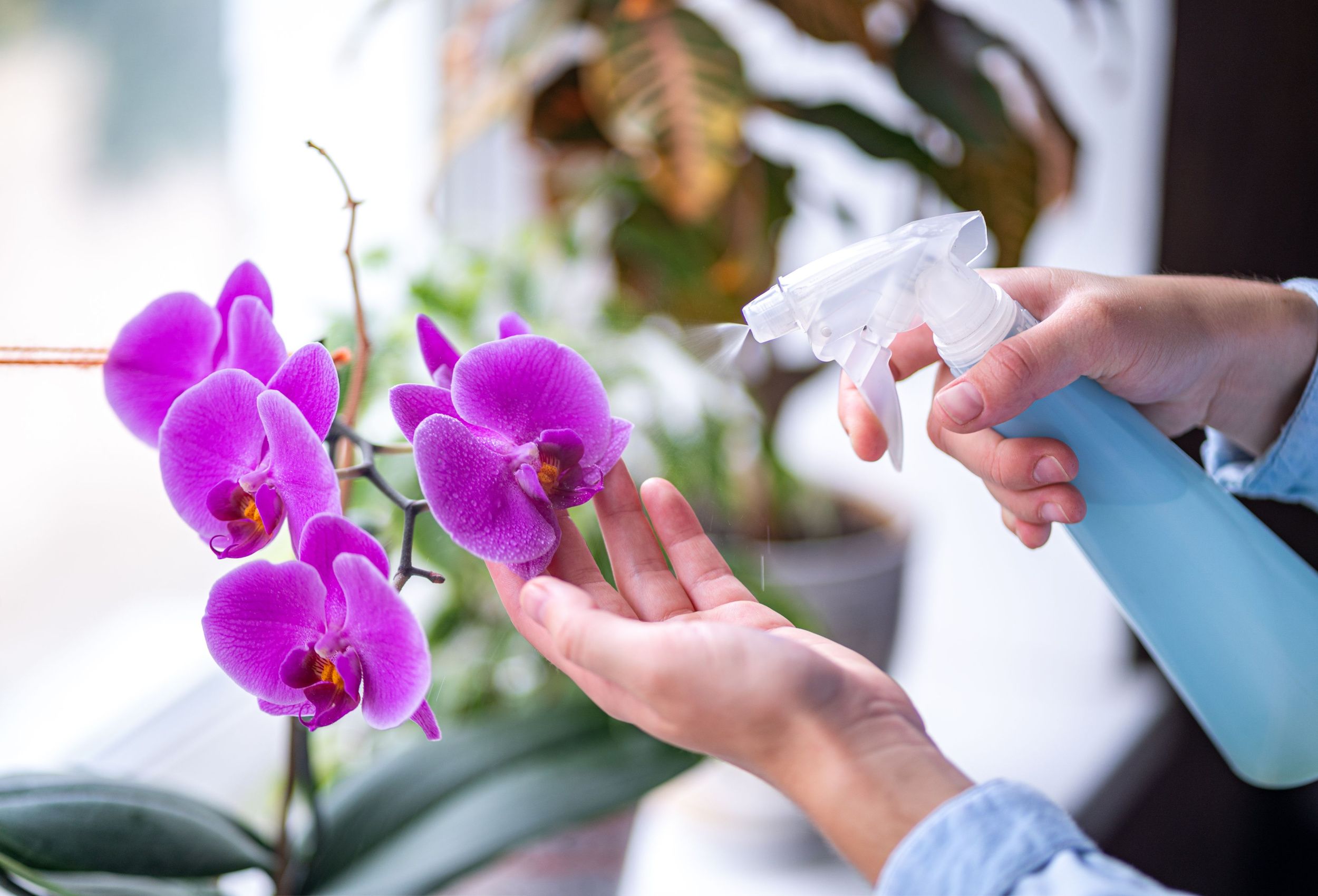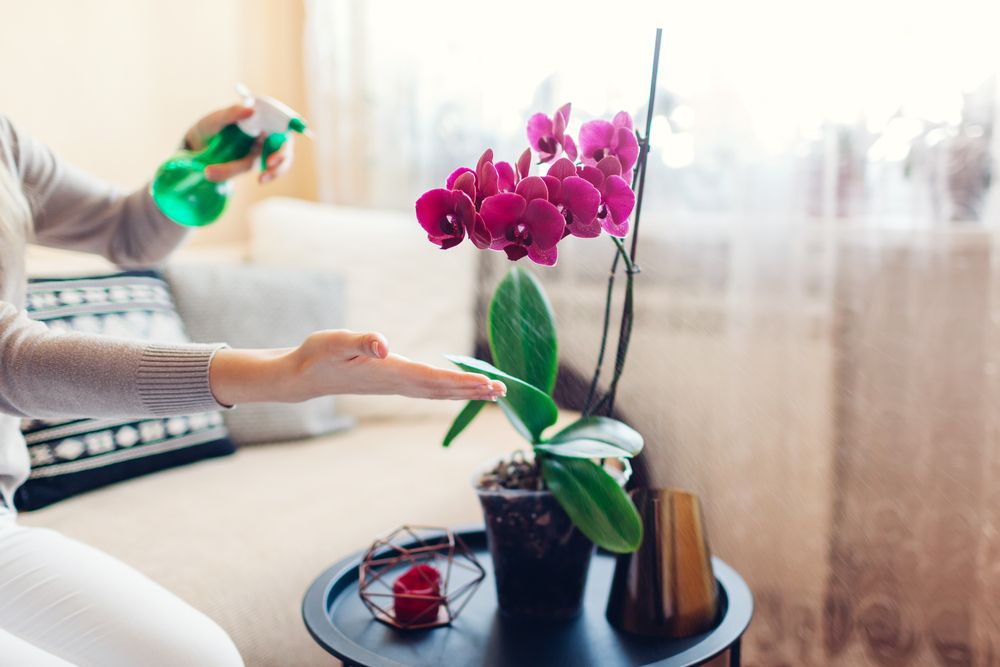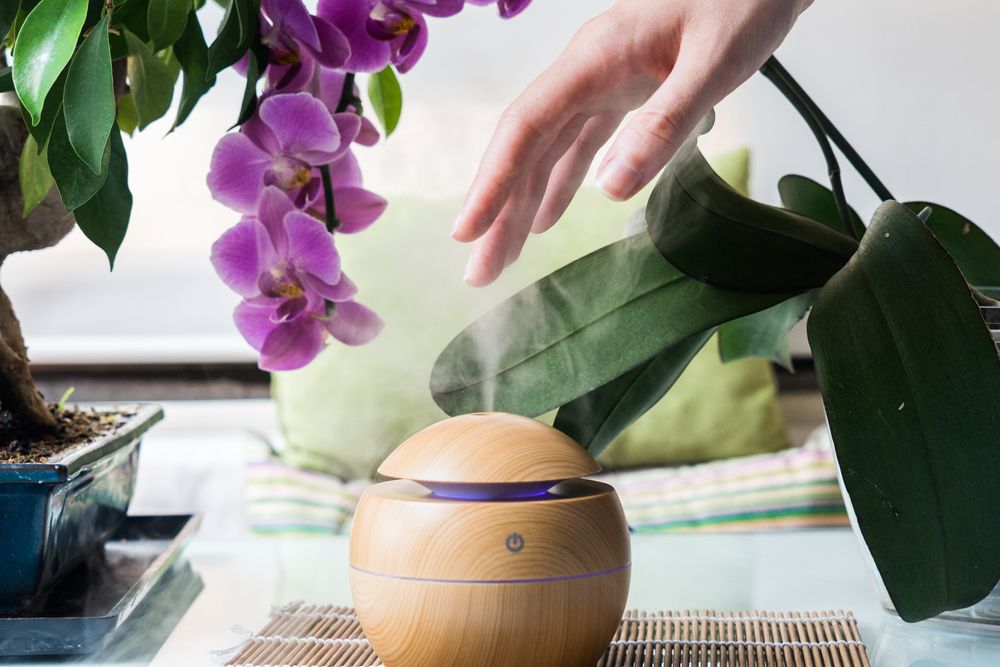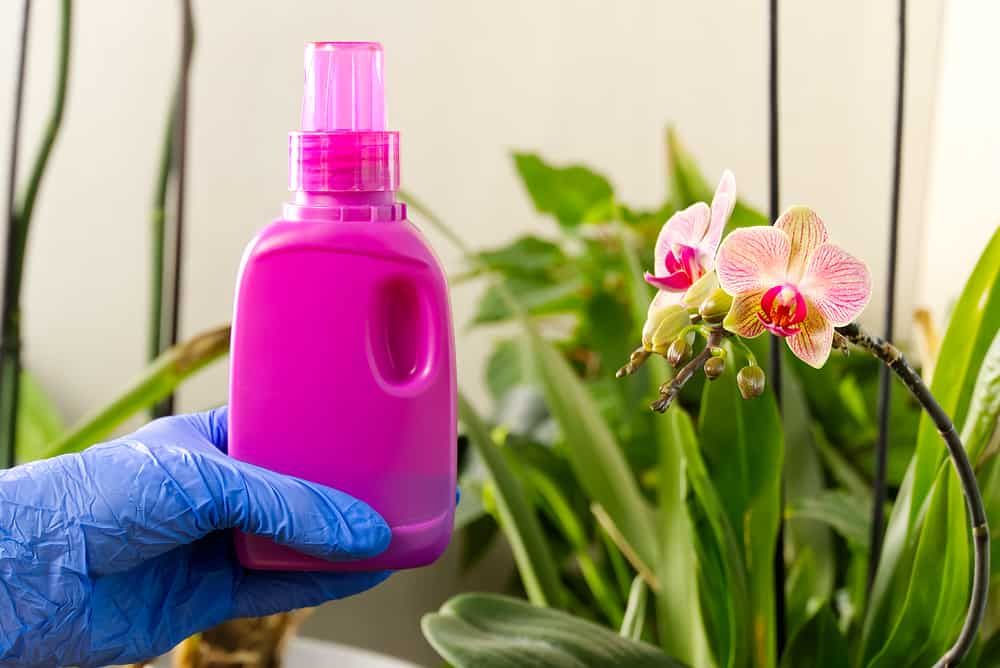Orchids are some of the most beautiful and elegant flowers in the world. They're also one of the most popular houseplants, prized for their intricate blooms. If you're lucky enough to have an orchid in your home, you've probably wondered how to keep it looking its best. Should you mist it regularly? What temperature water should you use? How often do you need to water it?
Don't worry, you’re not alone! Learn everything you need to know about misting your orchids to keep them healthy and happy. Read on for tips and advice from the experts!
To Mist or Not to Mist
Image credits: Mariia Boiko via Shutterstock
If you're wondering whether or not you should be misting your orchids, the answer is... maybe! It all depends on the type of orchid you have and the conditions in your home.
Orchids need humidity levels of between 40 to 80 percent. Misting is a great way to increase humidity around your orchids, especially for the thinner-leafed varieties.
Here are a few things to keep in mind when deciding whether or not to mist your orchids:
The Type of Orchid You Have
Some types of orchids, such as Phalaenopsis deliciosa subsp “deliciosa”, Cymbidium ensifolium, and Phaius grandifolius, have thinner leaves and benefit from regular misting, especially if the air in your home is dry.
Other types of orchids, such as the Cymbidium (boat orchids), need an average humidity level of 50 percent. Misting this type of orchid too often can actually lead to problems like Botrytis, a fungal disease that occurs when conditions are too damp.
The Conditions in Your Home
If you live in a naturally humid climate, you probably don't need to mist your orchids at all. On the other hand, if you live in a dry climate or your home is particularly dry (for example, if you have central heating), misting your orchids regularly can help them to thrive.
The Time of Year
Orchids generally need less misting in the summer when the air is naturally more humid unless you’re running an air conditioner. In this case, your orchids may benefit from extra misting.
In the winter, when the air is drier due to the heat or the radiators, they may need to be misted more often.
Alternatives to Misting Your Orchids
Image credits: Sr Picas via Shutterstock
Misting your orchids is a great way to keep them healthy and hydrated, but it's not the only way. Misting is a short-term solution for keeping your orchids happy and thriving in their environment. If you’re looking for better ways, there are plenty of alternative methods you can use to keep the humidity levels in the right range for your orchids.
Grouping Them Together
One alternative to misting your orchids is to cluster them together. By grouping your plants together, you create a mini-environment that helps to increase humidity levels around the plants. This is especially beneficial during the winter months when indoor humidity levels tend to drop significantly.
If you decide to group your orchids, remember that these plants require decent air circulation. Subject your orchids to more air by intermittently rotating them.
Humidifiers
Another alternative to misting is to use a humidifier in your home. This is a great option if you have multiple orchids, as it will help to keep the air around them moist and comfortable.
There are a variety of different humidifiers on the market, so be sure to do your research to find one that best suits your needs. A cool mist humidifier that creates a fine mist and is filterless is good for orchids.
Pebble Tray
The last alternative to misting your orchids is to use a pebble tray. To do this, simply fill a shallow tray with pebbles and water. Then, set your orchid pot on top of the pebbles. The water will evaporate and help to keep the air around your orchid moist.
Pro-tip: Don't let your orchid sit in the water as it can kill the plant.
Tips on How to Care for Your Orchid
Image credits: VidEst via Shutterstock
If you're an orchid lover, you know that these beautiful flowers can be finicky. They require some special care and attention to thrive. But with a little know-how, you can keep your orchid healthy and blooming for years to come. Here are some tips on how to care for your orchid:
Watering
Orchids like to be kept moist, but not soggy. Depending on the environment, water them with tepid water every four to 10 days. Let the water soak through the potting mix and let it drain out completely. If your orchid is potted in a bark mixture, water it until it is fully saturated. Bark is known to repel water initially, so you may need to water more thoroughly than any other potting medium.
If you're not sure whether or not your orchid needs watering, there's an easy way to check. Just feel the weight of the pot. If it's heavy, it means the potting mixture is still moist and your plant doesn't need watering. But if the pot is light, that means the mix has dried out and it's time to water your orchid.
Of course, you can also stick a pencil into the potting mix to see if the tip comes out dry. If it does, that means it's time to water. Either way, it's better to err on the side of too little water than too much.
Additionally, it’s best to water your orchid in the morning. That way, there is time for the water to evaporate before nightfall. This aids in preventing any bacterial or fungal diseases that may occur.
Fertilizing
If you're interested in giving your orchid a little something extra, then fertilizer might be the way to go. In general, it's best to use a balanced fertilizer diluted to one-quarter strength and apply it on a weekly basis. This will help ensure that your orchid gets the nutrients it needs without being overwhelmed.
Of course, you can also use a regular houseplant fertilizer if you prefer. Just be sure to flush the potting mix with clean water every month or so to prevent salt buildup.
Light
Orchids need bright, diffused light to thrive, so a spot near an eastern or southern window is ideal. If you have a northern window, the light may be too shady for your orchid, and a western window may work if the plant isn't scorched by the afternoon sun.
If your orchid's leaves are dark green, it needs more light. However, if the leaves are yellow, the orchid is getting too much light. The ideal leaf color is medium to light green.
In Summary
Ready to get misting? Excellent! Just remember to keep an eye on your plants and adjust the frequency of misting accordingly. And if you're ever unsure, always err on the side of caution and mist less rather than more. Now it's time to put these tips into practice and watch your orchids thrive! Don't forget to share this article with fellow orchid enthusiasts—they'll thank you for it. Do you have any tips or tricks for caring for orchids? Leave a comment below!




